Are you planning a trekking adventure in the stunning landscapes of Sapa, Vietnam, and wondering what to pack? The weather in Sapa can be unpredictable, so it’s essential to be prepared for anything. SIXT.VN is here to guide you through the packing essentials, ensuring you’re comfortable and ready to explore this breathtaking region. We’ll focus on layers, good shoes, and essential rain gear, all crucial for a successful trek. Remember to consider the seasonal weather conditions to ensure you have the right gear for your adventure.
1. Understanding Sapa’s Climate for Packing
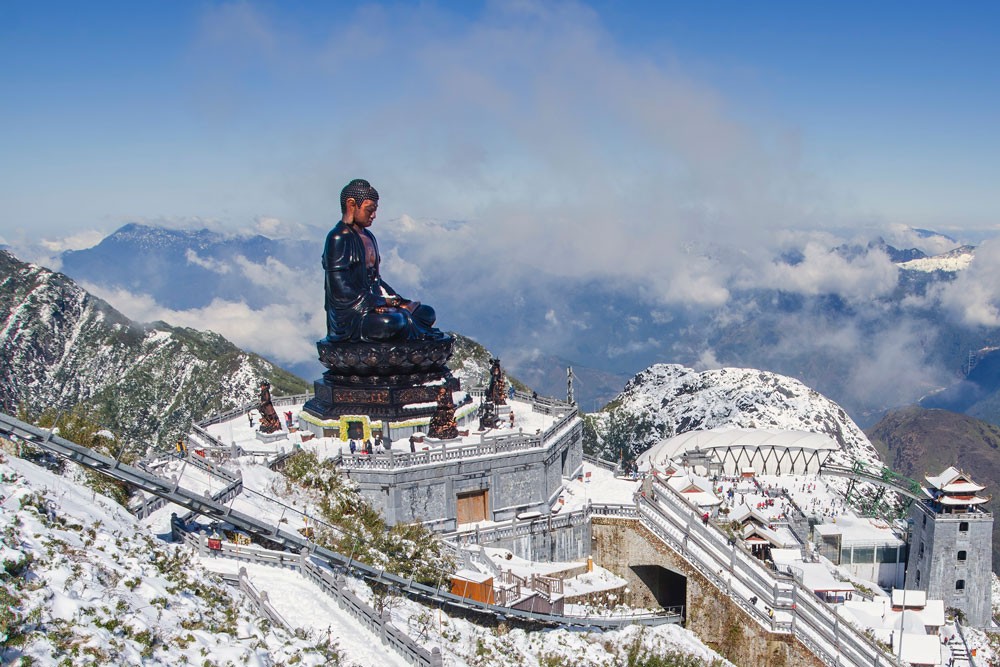 Rice terraces in Sapa, Vietnam
Rice terraces in Sapa, Vietnam
What makes Sapa’s climate unique?
Sapa, nestled in the northern Vietnamese mountains, boasts a climate unlike much of the country. Due to its elevation of 1,600 meters (5,250 feet) and proximity to the Chinese border, Sapa experiences four distinct seasons. These seasons bring diverse weather patterns, from misty springs and warm summers to golden autumns and chilly winters. Understanding these variations is critical for knowing what to wear and pack for trekking.
What are the key seasonal differences to consider?
- Spring (March – May): Mild temperatures (15°C to 20°C / 59°F to 68°F), increasing rainfall towards May, vibrant blooms, and lush green rice terraces.
- Summer (June – August): Warmest temperatures (20°C to 25°C / 68°F to 77°F) but also the highest humidity and frequent rain. The rice terraces are vibrant green, and waterfalls are at their fullest.
- Autumn (September – November): Mild and pleasant temperatures (15°C to 20°C / 59°F to 68°F), decreased rainfall, clear blue skies, and golden rice terraces ready for harvest.
- Winter (December – February): Coldest temperatures (5°C to 10°C / 41°F to 50°F), sometimes dropping below freezing, occasional snowfall, and dry, crisp air.
How does Sapa’s weather impact packing choices?
The season significantly impacts your packing choices. For example, summer requires lightweight, breathable clothing and reliable rain gear, while winter demands warm layers, including thermal wear and insulated outerwear. Autumn and spring offer a balance, but packing layers is still essential due to temperature fluctuations. According to research from the Vietnam National Administration of Tourism in 2023, understanding seasonal weather patterns is crucial for tourists planning outdoor activities in Sapa, enhancing their overall travel experience.
2. What are the Essential Clothing Layers for Sapa Trekking?
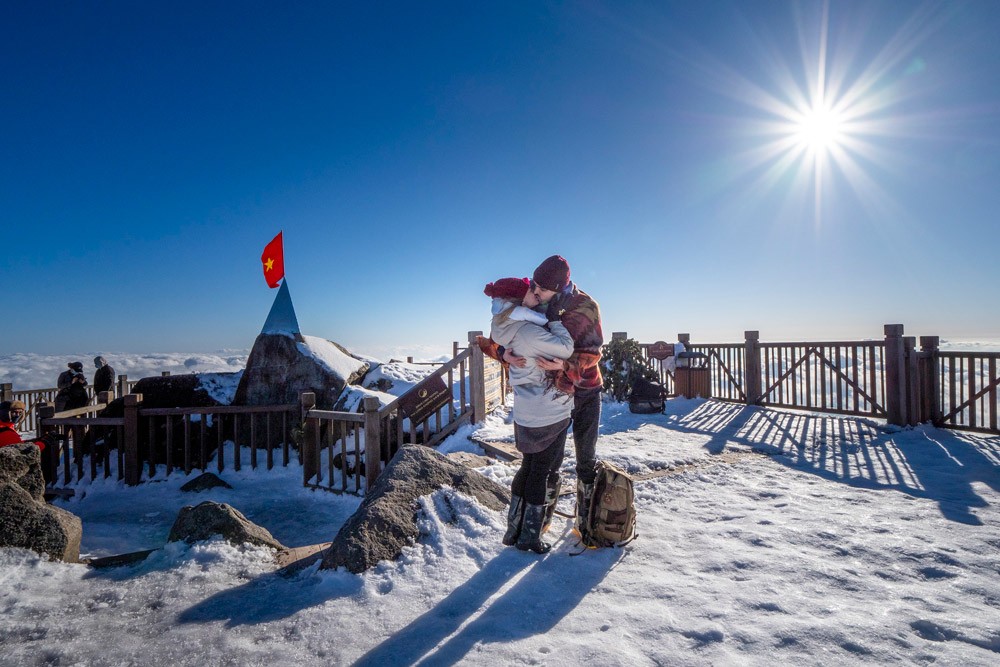 Hiker in Sapa wearing layers
Hiker in Sapa wearing layers
Why are layers important for trekking in Sapa?
Layers are the cornerstone of smart packing for Sapa. The weather in the mountains can change rapidly, and temperatures can vary significantly during the day. Layering allows you to adjust to these changes, maintaining comfort and preventing overheating or chilling. According to a study by the Adventure Travel Trade Association in 2022, proper layering can improve trekkers’ comfort by up to 60%, enhancing their overall experience.
What base layers should I pack?
Your base layer is the foundation of your layering system, wicking moisture away from your skin to keep you dry and comfortable.
- Material: Opt for moisture-wicking fabrics like merino wool or synthetic materials (polyester, nylon). Avoid cotton, which retains moisture and can make you cold.
- Types: Pack both short-sleeved and long-sleeved base layers for versatility.
- Quantity: Two or three base layer tops and bottoms should suffice for a multi-day trek.
What mid-layers are best for insulation?
The mid-layer provides insulation, trapping heat to keep you warm.
- Material: Fleece, down, or synthetic insulated jackets are excellent choices. Fleece is affordable and dries quickly, while down provides superior warmth-to-weight ratio. Synthetic insulation performs well in wet conditions.
- Weight: Choose a mid-layer that suits the expected temperatures. A lightweight fleece might be sufficient for spring and autumn, while a heavier down jacket is necessary for winter.
- Quantity: One or two mid-layers should be adequate.
What outer layers provide protection from the elements?
The outer layer protects you from wind, rain, and snow.
- Waterproof and Windproof Jacket: Essential for Sapa’s unpredictable weather. Look for a jacket with a waterproof rating of at least 10,000mm and taped seams to prevent water from seeping in.
- Waterproof Pants: While not always necessary, waterproof pants can be a lifesaver during heavy rain or snow.
- Breathability: Ensure your outer layer is breathable to prevent moisture buildup inside. Jackets with pit zips (underarm vents) can enhance ventilation.
3. What Type of Footwear is Best for Sapa Treks?
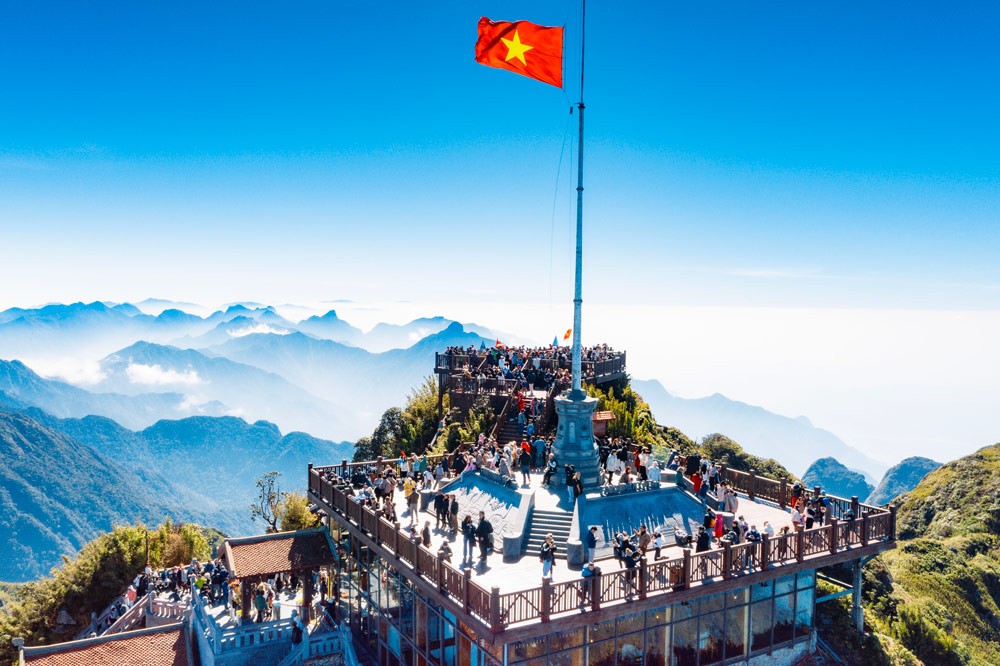 Hiking boots on a rocky trail in Sapa
Hiking boots on a rocky trail in Sapa
Why are good shoes critical for trekking?
Proper footwear is crucial for comfort, stability, and injury prevention on Sapa’s varied terrain. Trails can be steep, rocky, muddy, and slippery, so appropriate shoes are a must. According to a study by the American Podiatric Medical Association in 2021, wearing proper hiking shoes can reduce the risk of foot and ankle injuries by up to 70%.
What features should I look for in hiking shoes or boots?
- Ankle Support: High-cut hiking boots provide better ankle support, reducing the risk of sprains on uneven terrain.
- Traction: Look for outsoles with deep lugs for excellent grip on various surfaces. Vibram soles are a popular choice for their durability and traction.
- Water Resistance: Waterproof or water-resistant shoes keep your feet dry in wet conditions.
- Comfort: Ensure the shoes fit well and provide adequate cushioning and arch support. Break them in before your trek to avoid blisters.
What are the differences between hiking shoes and hiking boots?
- Hiking Shoes: Lighter and more flexible than boots, suitable for well-maintained trails and day hikes.
- Hiking Boots: Offer more support and protection, ideal for rugged terrain and multi-day treks with heavy packs.
What type of socks should I wear with my hiking shoes?
- Material: Choose moisture-wicking socks made of merino wool or synthetic materials.
- Thickness: Thicker socks provide more cushioning and warmth.
- Fit: Ensure your socks fit well to prevent blisters. Bring extra pairs to change into if your feet get wet.
4. What Rain Gear is Essential for Sapa?
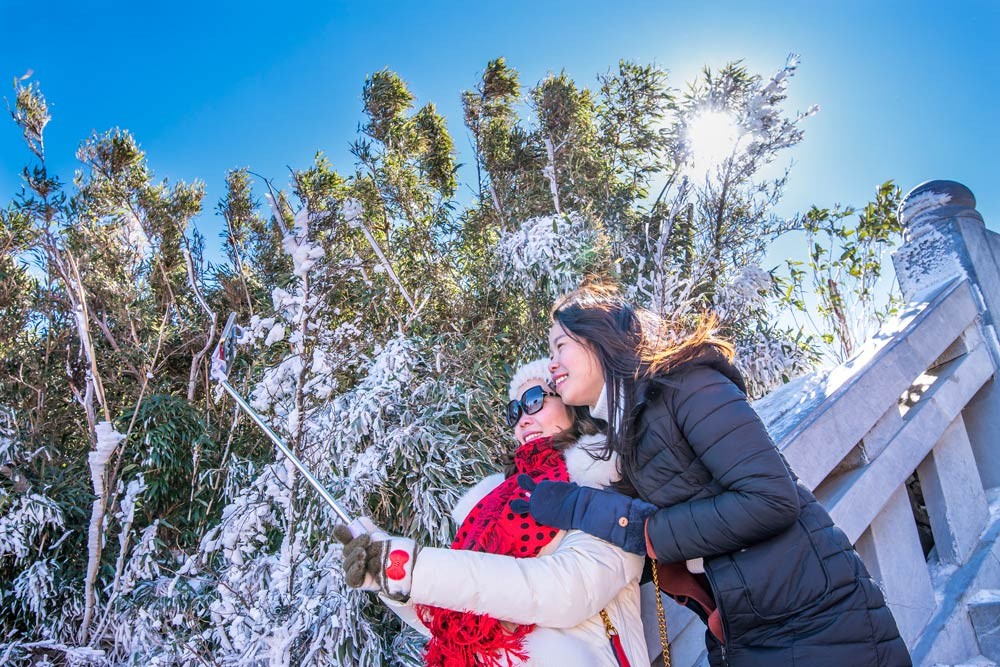 Traveler in Sapa wearing a rain jacket
Traveler in Sapa wearing a rain jacket
Why is rain gear necessary in Sapa?
Rain is a frequent occurrence in Sapa, especially during the summer months, but it can happen any time of year. Being prepared with reliable rain gear is crucial for staying dry and comfortable during your trek. As reported by the Sapa Tourism Information Center in 2024, sudden rain showers are common, making rain gear indispensable for visitors.
What features should I look for in a rain jacket?
- Waterproof Rating: Choose a jacket with a waterproof rating of at least 10,000mm.
- Breathability: Ensure the jacket is breathable to prevent moisture buildup inside.
- Hood: A hood is essential for keeping your head dry. Look for one that is adjustable and can be stowed away when not in use.
- Pockets: Pockets with waterproof zippers are useful for storing essentials like your phone and camera.
Are rain pants necessary for trekking in Sapa?
- Consider the Season: Rain pants are highly recommended during the rainy season (June-August) but may be optional during drier months.
- Material: Choose waterproof and breathable rain pants with a comfortable fit.
- Full-Length Zippers: Pants with full-length zippers make it easy to put them on and take them off over your hiking boots.
What other accessories can help keep me dry?
- Waterproof Backpack Cover: Protect your backpack and its contents from rain.
- Waterproof Bags: Use waterproof bags or dry sacks to protect electronic devices, clothing, and other valuables inside your backpack.
- Umbrella: A compact travel umbrella can be useful for walking around town or for light rain.
5. What Other Essential Items Should I Pack?
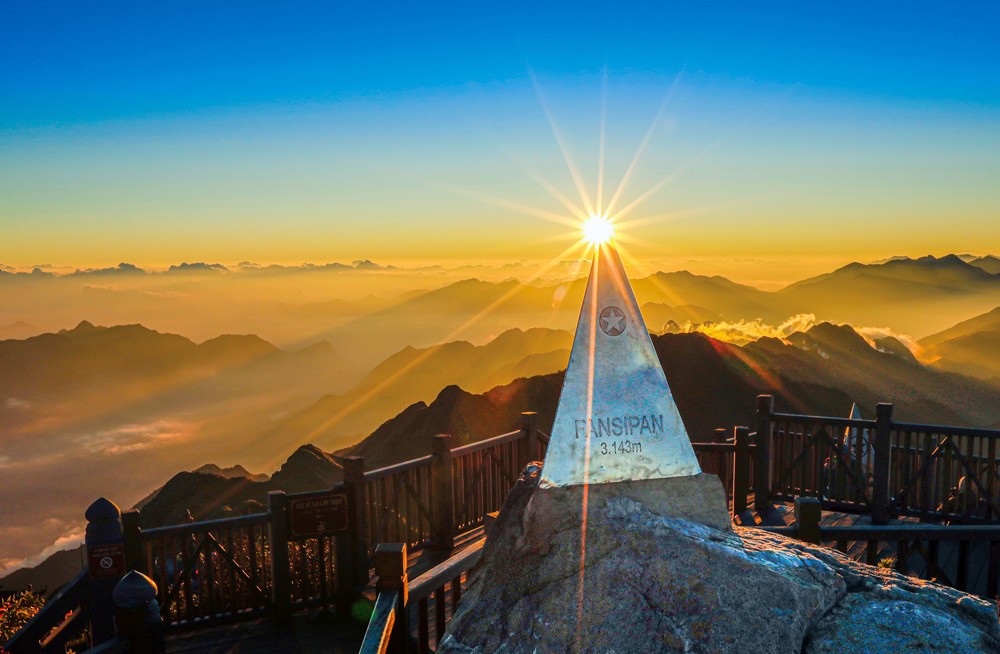 Sunrise over mountains in Sapa, Vietnam
Sunrise over mountains in Sapa, Vietnam
What should I pack for sun protection?
- Sunscreen: Protect your skin from the sun, even on cloudy days. Use a broad-spectrum sunscreen with an SPF of 30 or higher.
- Sunglasses: Protect your eyes from the sun’s glare. Choose sunglasses with UV protection.
- Hat: A wide-brimmed hat provides shade and protection from the sun.
What items are important for personal health and safety?
- First-Aid Kit: Pack a basic first-aid kit with essentials like bandages, antiseptic wipes, pain relievers, and blister treatment.
- Insect Repellent: Protect yourself from mosquito bites, especially during the rainy season. Choose a repellent with DEET or picaridin.
- Hand Sanitizer: Keep your hands clean, especially when trekking in remote areas.
- Medications: Bring any necessary prescription medications and over-the-counter remedies.
What comfort items can enhance my trekking experience?
- Trekking Poles: Provide stability and reduce strain on your knees, especially on steep trails.
- Headlamp or Flashlight: Essential for navigating in the dark or in dimly lit areas.
- Camera: Capture the stunning scenery of Sapa.
- Power Bank: Keep your electronic devices charged.
- Snacks: Pack energy bars, nuts, and other snacks to keep you fueled during your trek.
- Water Bottle or Hydration Reservoir: Stay hydrated by carrying plenty of water.
6. How to Choose the Right Gear for Each Season in Sapa
How does the weather affect clothing choices in spring?
- Layers: Pack light layers for fluctuating temperatures.
- Rain Gear: Be prepared for occasional rain showers.
- Comfortable Shoes: Essential for trekking and exploring.
What should I pack for summer trekking?
- Light, Breathable Clothing: Choose fabrics like cotton or linen.
- Rain Gear: A waterproof jacket and umbrella are a must.
- Quick-Drying Fabrics: Opt for clothing that dries quickly.
What clothing is best for autumn in Sapa?
- Light Layers: Similar to spring, pack light layers for comfortable temperatures.
- Light Jacket: A light to medium-weight jacket is ideal.
- Comfortable Shoes: Essential for enjoying the scenery.
What items are essential for winter trekking?
- Warm Jacket: An insulated jacket is a must.
- Thermal Layers: Pack thermal underwear for extra warmth.
- Hat, Gloves, and Scarf: Essential for keeping warm.
- Warm Socks: Pack thick, warm socks.
7. Where Can I Get Reliable Sapa Weather Forecasts?
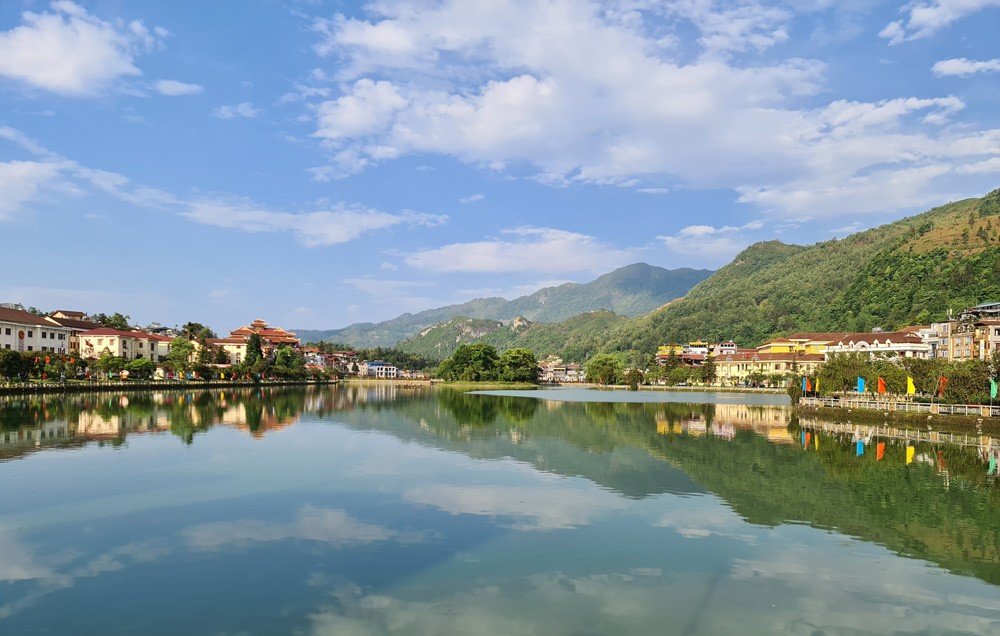 Weather app on a smartphone in Sapa
Weather app on a smartphone in Sapa
Why is it important to check the weather forecast before trekking?
Checking the weather forecast is crucial for making informed decisions about what to pack and how to plan your trek. Knowing the expected conditions allows you to adjust your gear and itinerary accordingly. As emphasized by the Vietnam Meteorological Agency in 2023, regularly monitoring weather updates is essential for safety in mountainous regions like Sapa.
What are reliable online resources for Sapa weather forecasts?
- AccuWeather: Offers detailed forecasts, including hourly and extended outlooks.
- The Weather Channel: Provides comprehensive weather information and radar maps.
- Windy: A visually appealing platform for visualizing weather patterns.
How accurate are long-range weather forecasts for Sapa?
Long-range forecasts (30 days or more) should be viewed with skepticism. Weather patterns in Sapa are complex and influenced by various factors, making accurate predictions beyond 10-14 days challenging. Focus on short-term forecasts for more reliable information.
Are there local sources of weather information in Sapa?
- Sapa-Based Tour Operators: Local tour operators often have up-to-date information on weather conditions in the area.
- Hotels: Many hotels provide weather forecasts and can offer insights into current conditions.
8. Trekking in Comfort and Style with SIXT.VN
Planning a trek in Sapa requires careful consideration of the weather and appropriate gear. By packing layers, investing in good shoes, and bringing essential rain gear, you’ll be well-prepared to enjoy the stunning landscapes of Sapa, no matter the season. Don’t forget other essentials like sunscreen, insect repellent, and a first-aid kit for a safe and comfortable adventure.
To make your Sapa journey even more seamless, consider the services offered by SIXT.VN. We provide expert travel advice, airport transfers, hotel booking assistance, and tour arrangements tailored to your preferences. Let us handle the logistics so you can focus on experiencing the beauty and adventure of Sapa. Contact SIXT.VN today to plan your unforgettable trip!
Address: 260 Cau Giay, Hanoi, Vietnam
Hotline/Whatsapp: +84 986 244 358
Website: SIXT.VN
Explore our website for Sapa travel tips and resources! Visit SIXT.VN today.
9. What Are The Benefits of Using SIXT.VN for Your Sapa Trip?
Planning a trip to Sapa can be overwhelming, but with SIXT.VN, you can enjoy a seamless and stress-free experience. Here’s how our services can benefit you:
| Service | Benefit |
|---|---|
| Travel Consulting | Personalized itineraries tailored to your preferences and the current weather conditions in Sapa. |
| Airport Transfers | Convenient and reliable transportation from the airport to your hotel in Sapa, ensuring a smooth start to your trip. |
| Hotel Booking | Access to a wide range of hotels in Sapa, catering to different budgets and preferences. |
| Tour Arrangements | Guided tours to Sapa’s most iconic destinations, led by knowledgeable local guides. |
10. FAQs About What to Wear/Pack for Trekking in Sapa
1. What are the most important items to pack for a trek in Sapa?
Layers of clothing, good hiking shoes or boots, rain gear, sunscreen, insect repellent, and a first-aid kit are essential.
2. What type of clothing is best for trekking in Sapa’s rainy season?**
Lightweight, breathable, and quick-drying fabrics are ideal. A waterproof jacket and rain pants are a must.
3. Should I pack hiking boots or hiking shoes for Sapa?**
Hiking boots are recommended for rugged terrain and multi-day treks, while hiking shoes are suitable for well-maintained trails and day hikes.
4. How can I protect my electronics from the rain in Sapa?**
Use waterproof bags or dry sacks to protect electronic devices inside your backpack.
5. Is it necessary to bring a hat and gloves for trekking in Sapa?**
Yes, especially during the cooler months (autumn and winter), a hat and gloves are essential for keeping warm.
6. What type of socks should I wear with my hiking shoes in Sapa?**
Choose moisture-wicking socks made of merino wool or synthetic materials for comfort and to prevent blisters.
7. How important is sunscreen for trekking in Sapa?**
Sunscreen is very important, even on cloudy days, to protect your skin from UV radiation.
8. Are trekking poles useful for hiking in Sapa?**
Yes, trekking poles provide stability and reduce strain on your knees, especially on steep trails.
9. What is the best time of year to trek in Sapa?**
Autumn (September to November) and spring (March to April) offer the most pleasant weather for trekking in Sapa.
10. How can SIXT.VN help me plan my Sapa trekking trip?**
SIXT.VN offers expert travel advice, airport transfers, hotel booking assistance, and tour arrangements tailored to your preferences for a seamless Sapa experience.



